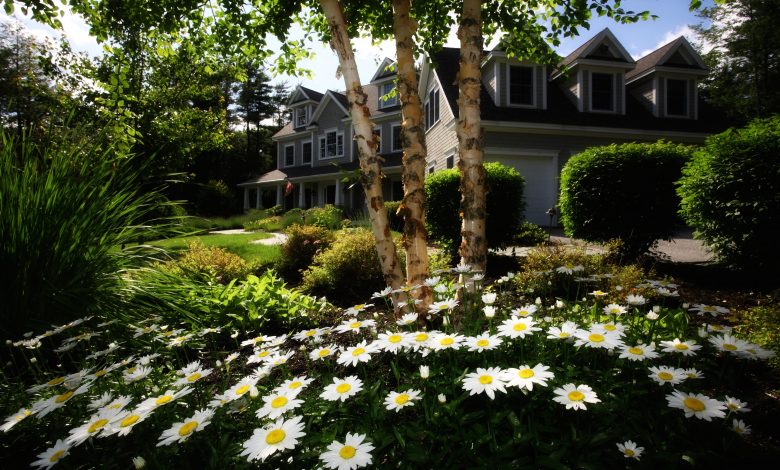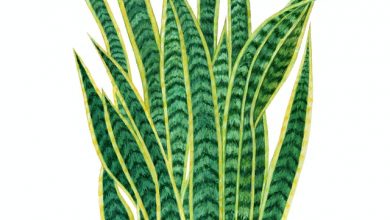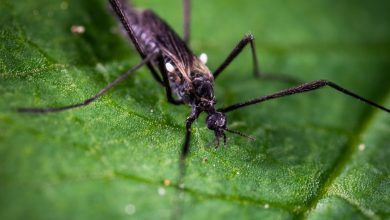How to Start Your Own Backyard Garden

A garden can do wonders for your yard. It is beautiful to look at and can provide flowers, fruits, and vegetables year-round. If you have been thinking about starting a garden in your backyard but don’t know where to begin, then you are in luck! The following is a simple guide that is going to give you tips on how to start and give your plants the best opportunities for growth and maturity. In just a few short months, you can take pride in knowing you planted your favorite flowers and vegetation that are growing right outside your window. Your garden should be your pride and joy, and these are the steps to get you there.
What Do You Want to Plant?
Before anything can be started, you have to figure out what you want to start planting in your backyard plot. There are so many options to choose from—flowers, vegetables, herbs, or a mixture of them all. Think about what you want to get out of your garden. Do you want to grow fresh vegetables or fruits for your family to enjoy? Do you want a colorful display of flowers that you can make floral arrangements with?
Once you pick your desired choice, start small. It is easy for even the most advanced gardener to get overwhelmed when there are too many plants being sown at once. You can always go larger when you get a handle on your initial crops.
If you decide on planting flowers, remember to take into account your region and perennials versus annuals. If you live in a hot or humid climate, your choices for flowers can be different than those who reside in a colder location. Certain plants thrive in extreme weather, while others do not. Do your research before you settle on the ones you want for your yard.
Vegetables and fruits work in the same manner. Some plants do well in your region, and some have a hard time thriving in the same location. When you start your garden, you want to do so with ease. By deciding on the proper plants, you are already ahead of the game.

Decide on a Location
Most fruits, vegetables, and flowers need ample sun for proper growth. Before you start digging up the earth, do a little investigative work. Start in the morning, and pay attention to where and how the sun hits your yard throughout the day. Depending on what you are planting, you want to make sure a particular area receives at least six to eight hours of sunlight per day.
You can even take pictures to remind you of the top spots you honed in on. With the help of the photos, you can make your ultimate decision based on what the majority of your plants need. Don’t forget to add in factors like wind and drainage. They also affect how well your plants do throughout the season.
If your yard has more shade than sun, don’t despair. There are plenty of plants that do well without hours of sunlight. Pick up your favorite gardening book, and make a shortlist of flowers that can flourish in shaded areas. You are going to be surprised at all of the selections of plants available to you.
Keep Your Water Source Close
Another aspect of your garden to take into consideration is your water source. When you plant a garden, you need to make sure your gardening hoses are going to reach the plot of land you chose. If you are unsure, the easiest way to determine this is to just run a hose from the spigot to the garden. Does it reach all the areas you intend to plant on? If the answer is no, you either need to move your garden or purchase a longer hose.
When you water the soil in the area, you also need to pay attention to any pooling of water. The liquid may be a sign that the drainage is poor, you have the wrong soil for proper gardening, or your plot is standing on a low point in your yard. Determine what the cause of the pooling is before you begin planting. It may mean you have to find another spot to sow.
If you find yourself in this situation, find a different area that is flat and doesn’t have too much wind affecting it. Just by doing this, you are going to make your gardening efforts easier and not so time-consuming.

Breaking Ground
Now is the time to get your hands dirty! At this point, you should be ready to break and clear the ground. This action means you need to remove any grass or sod that is covering the location of where you want to plant your flowers. You can use your spade or a gardening blade to cut out the area you want to remove. Be careful when you start this process. You are likely to encounter plenty of roots, sticks, and bugs when you first start. Be prepared for them to come flying your way!
Take care in removing any weeds and remaining plants in the area. You need to start with a clean slate when you start to plant your seeds and bulbs. Loosen up the dirt, and turn it a few times to ensure everything is even. There should not be any roots that are left behind. Dig at least eight inches to ensure you are leaving plenty of room for adequate growth. Bigger plants and trees may require a deeper dig.
After you cut out the outline of the garden, it is time to fertilize and enrich your soil. Your dirt should be full of nutrients and well-drained before you start planting. The texture of the earth should also be consistent in all places.
Most soil does need some help when it comes to improvement. You can either purchase fertilizer and nutrients explicitly made for the type of plants you want to grow, or add organic material from your compost pile. You can use decaying leaves, old grass, manure, or other decomposing items that are bug and mold free. Add at least a few inches of either substance, and spread it out evenly.
Allow a couple of weeks for the compost to work its way into the soil. If you choose to use fertilizer, follow the directions on the package. Make sure you allow enough time for the material to become a part of the soil. Turn the earth a few times a week to create uniformity. Nourished soil is the foundation of a successful garden.
Planting Time
Now is the time to plant your flowers, fruits, and vegetables. If you are using seeds, follow the directions that are on the packet. It should give you the dimensions of how deep the seeds should be planted and how far apart each hole should be. Don’t skip out on this part. You want to ensure that when the seeds sprouts, they can grow to maturity. Use your hands and gardening tools to create the divots. Once you have them all in place, you can start adding in the seeds.
If you have purchased potted plants to move into your garden, create holes big enough for the transfer. Read any instructions that are attached to how the flowers should be planted. Gently and slowly remove the plant from the container, and place it in your garden. Move the soil back into the hole. The dirt should remain loose around the plant and shouldn’t be compacted.

Give Them Water
After you have sown all of your plants, seeds, and bulbs, you can water the garden bed. The soil here should always stay moist but not soggy. You need to spot check your plot every day to make sure all areas are getting the moisture that is required. Most gardeners follow the rule of using about an inch of water a week to ensure proper watering. This measurement includes rainfall, so if you live in a particularly wet area, you need to take that into account when watering.
Pay Attention
As your plants start growing, you need to pay attention to any bugs or critters that are beginning to make their way into the garden. Certain insects can destroy leaves and stalks in days, so you need to move fast when identifying any unwanted visitors. There are plenty of natural repellants and sprays you can use that don’t include pesticides.
If you have larger animals entering your garden, such as moles, squirrels, or the like, you can create a physical barrier to stop them from ruining your plants. You can set up a mesh fence to discourage them, or you can use netting over your crops to keep them from eating through everything. Some gardeners use household items as deterrents. This includes black pepper, beer, and garlic. When you sprinkle these items around the perimeter of the garden bed, the smell causes pests to avoid the area. Every garden is different, and you should use a deterrent that works for you.
You should also pay attention to any mildewing or molding that can occur on leaves and stalks. This decay could be a sign of disease, and those areas should be cut off immediately. Mildew disease can spread from plant to plant, so take extra care that you have removed the affected plants fully.
Mulching
Mulching can help with ground cover. It keeps the soil moist and can also deter critters from getting to the roots of your plants. If you decide to use mulch, spread an even layer on the dirt. You may not need to water the ground as much once you apply it. Every couple of days, you can do a soil test to determine how often watering is needed to keep the ground moist. Mulching is not a necessity, but some gardeners prefer the look or can find the benefit of having it laid down.
Weeding
Now that your plants are maturing, you may run into some weeds that are trying to take their place. This unavoidable part of gardening should be expected, even though it can be irritating. The necessity to weed goes beyond the superficial. Yes, it does make your garden look better when it is free of the pests, but it also gets rid of invasive plants that can quickly overtake your garden. In some cases, it can even kill the flowers you have worked so hard for.
Weeds do grow quickly and seem to pop out of nowhere. They also need water and sunlight to thrive, and they soon start to steal the nourishment that your flowers and plants desperately need. Their invasiveness is swift and can happen overnight.
Take an afternoon to weed. When the soil is moist, the plants are easier to pull out, so you may want to start after a rain or watering. Take care when you walk around the bed. You don’t want to compact the soil, as this could deter plant growth. Stepping stones work great here if you don’t have them installed already. If you don’t have stones available to you, gently reach for as many weeds as you can while you are in one area.
Choose the right tools to get the job done fast. In addition to pulling weeds with your hands, spades and small hand rakes can also help. There are also special rotary tools that can get the job done in minutes. Depending on how big your garden is, you can pick one choice or a combination of items.
When you are done with weeding, remember to clean up. All weeds should have been placed in piles for easy disposal. It is not recommended to add weeds to your compost, as they could still take root and start to grow inside. Either burn the plants or throw them away.
Weeding doesn’t end after the first time. You need to continuously pull the plants before they start to take over your plot. A good gardener knows to check their land at least once a week to make sure there isn’t any new growth happening.

Enjoy Your Garden
Now that you have a beautiful garden in place, it is time to sit back and enjoy it! Once mature, you can snip off blooms to transfer into a vase for indoor display. When you do, follow these tips to make sure you are cutting off the flowers correctly:
- Cut flowers before it becomes hot. Early morning or early evening are the best times to start. By doing this, you are giving each flower a longer chance to thrive in your home.
- Use pruning shears or sharp scissors when cutting. You don’t want to rip or tear any part of the stem, as this could do more harm than good. The cut should take place near the base of the plant.
- Carry a small vase or jar with water inside to place the flowers in as you make your way around your garden.
When you are done, you are ready to make your arrangement.
Making a Bouquet
Making a bouquet or arrangement is easy once you understand the principles of the process. After you add a few inches of lukewarm water, add your plant food. This sustenance can be store-bought or natural. You should now select your biggest bloom to be the centerpiece of your vase. Then, add in your focal flowers. These are the plants you also want to be highlighted. Arrange these blooms around the centerpiece. You can add new flowers to implement color and dimension. Any stalks of leaves can also be introduced.
Change out the water every few days to extend the bloom’s life. You can cut the ends of the stem to help them take in the water more efficiently. Each flower is different, but you can expect your arrangement to last about a week or two.
Picking Fruits and Vegetables
If you decided on planting vegetables or fruits in your garden, you could also harvest them once matured. Take a basket with you every time you go outside to see what is ready to be picked. When you pick a vegetable right at its peak, you are encouraging the plant to grow another to replace it.
Keep track of when you planted each one. This way, you can have a rough timeline of when the plant is going to yield its fruit. Any rotting fruits or vegetables should be thrown away immediately.
Like flowers, herbs should be cut as close to the base of the plant as possible. Use your gardening scissors to pluck what you want to use carefully. Any dying vegetation should either be cut or pulled altogether.

Making your backyard garden is exciting for any type of gardener. There are so many avenues to choose from when it comes to deciding what you want to grow. In the beginning, take the time to figure out what you want to do. You should think about dimensions, plant choices, and other basics before you break ground. When you prepare yourself correctly, your garden is sure to be a knockout!



